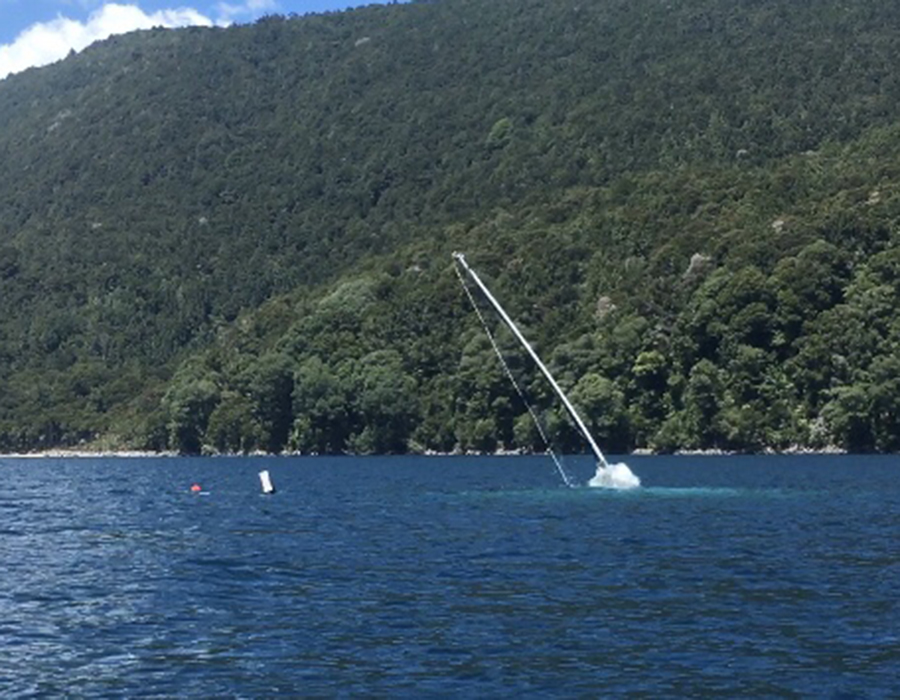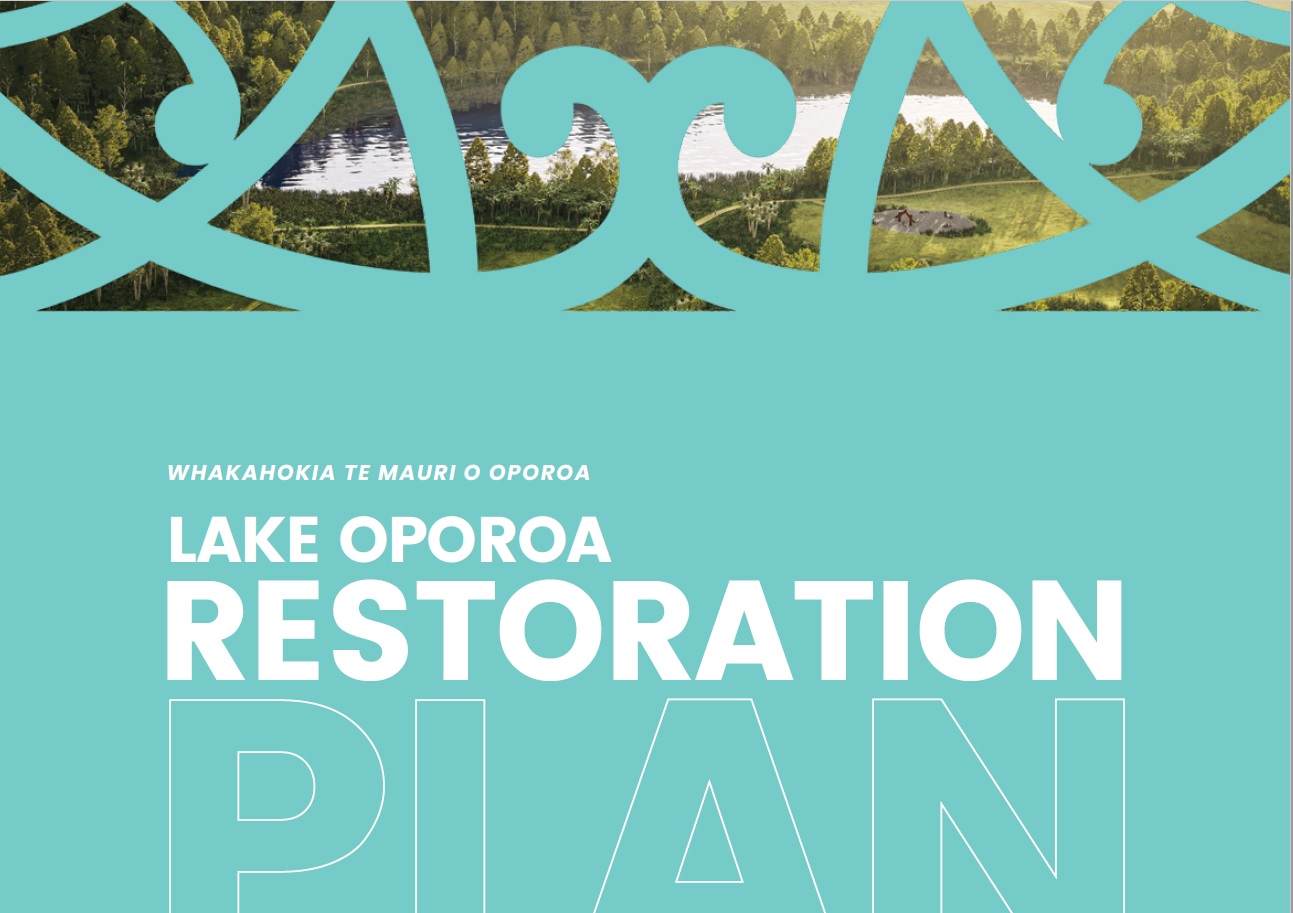Alex Matheson, Victoria University of Wellington student
The problem: Some of the lakes cored for Lakes380 don’t provide the targeted 1000 years of lake history, due to, among other reasons, a high sedimentation rate.
Our mission: Collect longer, 6 meter sediment cores from several Rotorua and South Taranaki lakes, using the powerful Mackareth corer, to provide more extensive records for these lakes.
The team: Jamie Howarth and Adelaine Moody from Victoria University, Sean Fitzsimons from Otago University, and me (Alex), who’d been lucky enough to spend the last couple of summers involved in Lakes380 lab work and was super excited to be out in the field!
Jamie, Sean and Adelaine – coring champions that they are – were just back from a long trip around Hawke’s Bay but were nevertheless ready for round two. After meeting at Avalon, we drove straight up to Rotorua (delayed only by a long, hot wait in roadworks outside Taihape – we’re definitely not still bitter about this….)
The next day started early for our first lake, Okataina. This is a beautiful lake surrounded by native bush and sparkly white pumice sand. To gain an understanding of the lake bathymetry, a CHIRP was used to survey the lake floor; this is a piece of equipment that sends sound waves down to the lake bed, where different sediment densities reflect the sound waves differently. A sensor then picks up this information, which is used to build a 2D image of the first several metres of lake floor. It was cool to see this being developed in real time as we trundled back and forwards across the lake, and Jamie pointed out the many landslide deposits buried below the lake floor, possibly evidence of past earthquake disturbance. A quick dip in the beautifully warm (23 degrees C!) lake water made a great end to the first day.

First morning at Lake Okataina
The next day was my first time seeing the Mackareth corer in action. The corer uses compressed air to push a 6m core pipe down into the lake sediment, and has a large metal drum to provide a stable coring platform. To my surprise, we didn’t transport the corer onto the lake on the larger boat, Serenity, but the small red inflatable, Firefly. Seeing the unwieldy corer strapped on to Firefly, a good third dangling off the front of the boat, needs to be seen to be believed, but works surprisingly well! We took three long cores throughout the day, and Adelaine and I enjoyed the challenge of trying to film the corer emerging from the lake – not as easy as you might think!

Off to hunt some core: Jamie and Sean + the Mackareth on Lake Okataina

The Mackareth emerges! Coring on Lake Okataina
On our final day at Lake Okataina we were joined by Sarah from Te Arawa Lakes Trust. Sarah is involved in the wetland restoration programme and was curious about what we were doing. We also had a visit from a crew from Te Karere, wanting to do a short feature on the trip. Jamie and Sarah did an awesome job talking about the project with extremely short notice! After the crew had gone, we pumped out the final long core as well as four short cores.
After thoroughly cleaning all gear and both boats, it was on to Lake Rotorua. We were joined here by two of Sarah’s colleagues, Robbie and Soweeta. It was great to have them along with us, and they kindly shared some history and waiata of the lake and Mokoia Island—definitely a highlight for me! Learning some of the social and historical aspects of Lake Rotorua was awesome, as the physical aspects of a lake are inevitably the main focus when coring.

Coring on Lake Rotorua
Day two out on a windy Lake Rotorua was a bit of a marathon, but we managed to get it all done. Three long cores and three short cores were taken, followed by extreme core cutting on the lake edge. High productivity in the lake meant the sediment was full of trapped gas, and tried to escape out of the core barrel the moment we cut the core into sections. It required full concentration and careful technique from all four team members to get the job done.
After a slightly more relaxed day of gear cleaning and core splitting, we pushed on to Lake Okareka. Wind was no issue here, but wake from other speed boats was! The corer also got stuck several times, and needed a bit of extra help from Serenity’s motor to pull it free. Despite this, we were a slick operation and had all the cores taken and cut into sections by a cruisy 4 pm. We were also joined by another visitor during the day. This time it was Mike, a local retiree heavily involved in conservation work around the lake. Once again, it was cool to have someone out and seeing what we were up to, and we enjoyed learning about the local restoration efforts, track building, and much more besides!
Our first lake in the region was Lake Waikare. After spying some suspicious looking clumps of vegetation in the middle of the lake, a quick CHIRP survey revealed that they were in fact tree stumps reaching up from the lake floor. This indicated that Lake Waikare was relatively young, as the stumps had not yet rotted away below the surface, and the lake was unlikely to have recorded even close to 1000 years of history. The sticky lake sediment further convinced Jamie and Sean that it would not be worth the risk of getting the corer stuck, and we decided to move on to our next lake the following day.
Lake Moumahaki was our final and most difficult to access lake. Launching Firefly was no problem, but getting the much larger Serenity in the water was no mean feat. Attempts to back the boat trailer into the lake resulted in it getting completely bogged down in the mud, requiring digging and winching to get it out again. Eventually a solution was found; the boat was backed along more solid ground into a stream, and floated from there around into the lake. “Sheer bloody-mindedness,” Jamie confidently informed us as he winched the boat down on a crazy angle, “is the real key to success in the academic world!”

Stuck in the mud: the aftermath of our trailer backing exploits.
After the excitement of launching, the two days coring Lake Moumahaki passed smoothly, with four long cores and four short cores taken, as well as a CHIRP survey of the lakebed. The cores were once again quite gaseous, but we had our technique down by this point and split them easily into sections.

Lake Moumahaki, with a landslide deposit visible as grassy slope in background.
With Lake Moumahaki done our mission was complete, and all that remained was some final core cutting before the journey home. After 14 days straight, it’s safe to say the general feeling was one of exhaustion, but there was also satisfaction in seeing our large stash of cores in the Lakes380 container fridge. For me, I learnt heaps, tried more froozeball flavours than I knew existed, and thoroughly enjoyed getting to work outside in the sun. Going on this trip was an epic end to the summer – a big thanks to Jamie, Sean and Adelaine for having me along!














